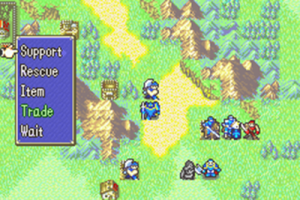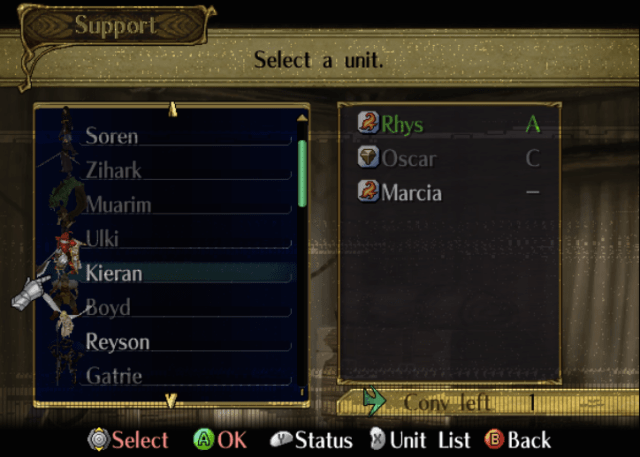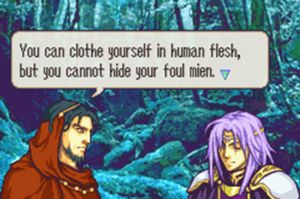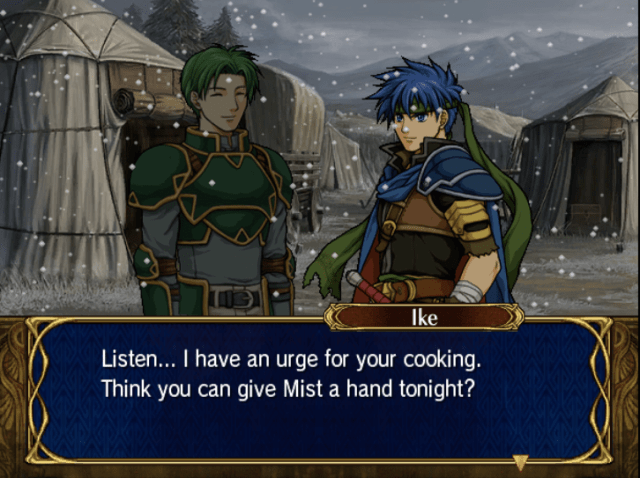Trending
Opinion: How will Project 2025 impact game developers?
The Heritage Foundation's manifesto for the possible next administration could do great harm to many, including large portions of the game development community.

Featured Blog | This community-written post highlights the best of what the game industry has to offer. Read more like it on the Game Developer Blogs or learn how to Submit Your Own Blog Post
The Fire Emblem series' unique approach to character development and relationships, combining story and strategy.

This is a repost from my blog at gamemakeworld.wordpres.com.
Fire Emblem is a series of grid-based, turn-based SRPGs, spanning more than 10 titles from NES to Nintendo 3DS. Each has a lot of playable characters, and, as in many games with large casts like Chrono Cross and Romancing Saga, some characters cease to have any involvement in the story after their initial recruitment and end up just being stand-ins during battle. This can be a sad waste of good characters if the player develops an attachment to one that doesn’t get much screen time.
Fire Emblem uses a unique “Support” system to deal with this. It keeps the players engaged with characters of their choosing while also being an important strategic element of the battle system.
If characters spend enough time fighting together, they gain a new battle command to “Support” each other. This initiates a conversation between them that builds their relationship and confers stat bonuses. (In Path of Radiance, the conversations happen back at the “base” between stages, which was nice but lacked the pleasant punch of a cute little chat occurring in the middle of a heated battle.)

These two characters are ready for a Support conversation!
Characters can only support certain other characters, and each pairing has three potential conversations before it is maxed out at “A” Level. Since each character can only have five conversations total, they will only be able to reach the maximum Support level with one other character.

Characters reach “A” Level after three support conversations together.
The Support system develops characters in a way that is optional and unobtrusive, and for people who love characters is a real treat. You can invest time and attention in your favorite characters to give them the extra screen time they deserve.

Unexpected backstory often comes up in Support conversations.
At the same, building character Support is a matter of strategyーcharacters need to spend a certain amount of time together in battle in order to build up support levels, so you have to consider when and where to deploy them (they must be in adjacent spaces for a certain number of turns in most games, or simply be deployed in the same battle in others).
Support also benefits from Fire Emblem’s characteristic writing style. It is cartoonish and playful with lots of comical metaphors, made-up words, and vocabulary you haven’t seen since Language Arts class in middle school. Sinister enemies declare that you can’t escape them in your “leafy playpen” (ie. the woods), and characters use insults like “Dastard!” and “Dog breath!” It’s especially funny when characters suddenly have a picnic or discuss a painting through Support in the middle of an otherwise dire battle situation.

If I recall correctly from 8th grade, “mien” is your appearance.
Also, many of the conversations are at least vaguely romantic, making it one of the first and only series I’ve played that allows massively same-sex match-matching (each pairing even gets a unique ending script about their lives together in Blazing Sword for GBA). One exception is Geneology of the Holy War (SNES), where characters can only be paired with the opposite sexーbut then you get to play as their children in the next generation, which is pretty neat.
What’s makes Support so effective is that character development takes place in the field where all the strategic action occurs rather than in a separate world of cutscenes between stages. Furthermore, different characters provide different types of Support stat boosts, so there’s plenty to consider with the match-making. This combination of strategy and story makes characters and their relationships feel real and meaningful within the world of the game.

[Note: I haven't played the DS, 3DS, or Wii versions so I can't speak for them. Please comment if you have!]
Read more about:
Featured BlogsYou May Also Like